Client Chronicles
In a challenging environment where surveys were deeply unpopular and trust was low, a mid-sized organization with 12,000 employees faced a significant change management obstacle. The history of poorly managed change initiatives had eroded employee confidence, and the organization’s bureaucratic and numbers-driven nature demanded a robust method to measure change success. This is the story of how I addressed this unique challenge.
 The organization’s aversion to surveys and the dismal survey response rates (less than 20%) presented a unique problem. The finance department was skeptical about the change efforts, insisting on tangible benefits to justify the costs. In their view, the change initiative was set to show a negative return on investment.
The organization’s aversion to surveys and the dismal survey response rates (less than 20%) presented a unique problem. The finance department was skeptical about the change efforts, insisting on tangible benefits to justify the costs. In their view, the change initiative was set to show a negative return on investment.
When I joined this scenario, my instructions were clear: no surveys. I delved into the organization’s existing data, seeking insights that aligned with their strategic goals. My goal was to develop a measurement tool that resonated with the organization’s direction and convinced decision-makers of the change initiative’s importance.
I developed a four-part scorecard. This tool was designed to track the change process, efficiently use allocated funds, and recognize the change team’s contribution to overall organizational benefits. Initially, there was hesitation among the team to take credit for broader organizational improvements. However, as the scorecard evolved and received positive feedback from leadership, the team’s confidence grew.
A crucial decision was to share the scorecard with the entire workforce. This transparency was key in building trust and reducing resistance. Employees could see their efforts directly contributing to the success of the change initiative. The scorecard became a tool for not just measuring success, but also for improving engagement and trust among the workforce.
Today, this scorecard is a fundamental part of my approach in all change management projects. It serves multiple purposes: securing funding, gaining executive support, and providing a comprehensive view of the effectiveness of change initiatives. It allows for timely adjustments to strategies, ensuring alignment with organizational goals.
This experience taught me that measuring change in a low-trust environment requires creativity and alignment with organizational objectives. The success of the scorecard proved that effective change management is possible even in the most challenging environments, by focusing on transparency, strategic alignment, and acknowledging the contributions of all involved.
Want to try to scorecard for yourself? Download it here.

